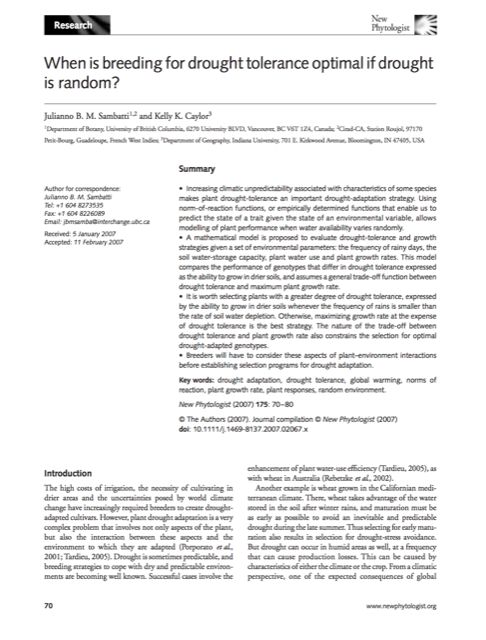When is breeding for drought tolerance optimal if drought is random?

Sambatti, J., K.K. Caylor (2007) “When is breeding for drought tolerance optimal if drought is random?” New Phytologist, 175(1):70-80, doi: 10.1111/j.1469-8137.2007.02067.x.
Increasing climatic unpredictability associated with characteristics of some species makes plant drought-tolerance an important drought-adaptation strategy. Using norm-of-reaction functions, or empirically determined functions that enable us to predict the state of a trait given the state of an environmental variable, allows modelling of plant performance when water availability varies randomly.
A mathematical model is proposed to evaluate drought-tolerance and growth strategies given a set of environmental parameters: the frequency of rainy days, the soil water-storage capacity, plant water use and plant growth rates. This model compares the performance of genotypes that differ in drought tolerance expressed as the ability to grow in drier soils, and assumes a general trade-off function between drought tolerance and maximum plant growth rate. It is worth selecting plants with a greater degree of drought tolerance, expressed by the ability to grow in drier soils whenever the frequency of rains is smaller than the rate of soil water depletion. Otherwise, maximizing growth rate at the expense of drought tolerance is the best strategy.
The nature of the trade-off between drought tolerance and plant growth rate also constrains the selection for optimal drought-adapted genotypes. Breeders will have to consider these aspects of plant-environment interactions before establishing selection programs for drought adaptation.
